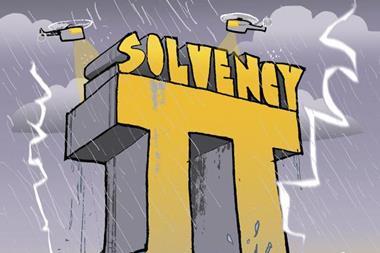Changes aimed at easing transition to Solvency II

The PRA has modified the UK’s capital standards requirements so insurance companies can submit information using models and systems they have developed for Solvency II.
The Individual Capital Adequacy Standards (ICAS) that UK-based insurers have to meet will remain in force until the long-delayed European financial security regime for the insurance sector is up and running.
But the financial services watchdog has updated the standards so that firms can submit their data using internal models and computer systems that they will have to use under Solvency II. The capital requirements will not change.
Companies have spent large sums of money developing the models and systems only to find the launch date for the new regime has receded further into the future. The EU puts the figure for the whole Eurozone at €2-3bn, while industry observers estimate the cost to UK firms has reached £200million.
PRA chief executive officer Andrew Bailey told yesterday’s ABI conference: “The official implementation date for Solvency II of 1 January 2014 is clearly unrealistic and late last year we set a new planning horizon of 31 December 2015 for the UK industry.
“During that period we are allowing firms to put to use the significant investment in Solvency II internal models to meet the current regulatory requirements under ICAS – referred to as ICAS plus.
“We believe the UK’s current prudential framework for insurers is a good basis for a smooth transition to the new regime under Solvency II.”
Bailey said ICAS plus would also incorporate the self-assessment models that firms have developed under Solvency II’s second pillar, governance and risk management.
“We believe that the Solvency II Own Risk and Solvency Assessment (ORSA) will help give us a better understanding of an insurer’s business,” he said. “It is therefore logical for us to make early adjustments to our existing regime to incorporate the ORSA under ICAS plus. This will mean that UK insurers are better prepared for the introduction of Solvency II.”
Early warning indicators based on metrics that differed from those used in companies’ internal models were also being used to monitor the models’ appropriateness to changing circumstances.
“In cases where the indicator’s threshold is breached it will trigger an immediate supervisory response,” Bailey said. “A capital add-on is, in all but exceptional cases, likely to be the most effective way to restore compliance with the Solvency II calibration requirement - 99.5 per cent over a one-year period.
“Importantly, we expect that where internal models are used for regulatory capital purposes, they should contribute to prudent risk management and measurement. They should be updated regularly in order to reflect the insurer’s risk profile - and not just to ensure compliance with the letter of our requirements.”
Early warning indicators have been set at a level between Solvency II’s solvency capital requirement and minimum capital requirement. When firms fall below the threshold, the PRA will go in and require them to hold additional capital.
Bailey said the PRA had a separate division for insurance, which had been divided into two directorates, for life insurance and general insurance. For supervision purposes it divided firms into five categories.
Category one companies posed the greatest risk to PRA objectives due to their size, interconnectedness, complexity and business type - attracting a corresponding share of supervisory attention - and category five the least. Firms had been told which category they fell in.






































No comments yet